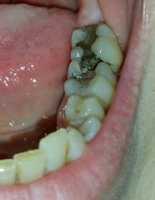 MedicalResearch.com Interview with:
Bruno Sauce, PhD
MedicalResearch.com Interview with:
Bruno Sauce, PhD and
Louis D. Matzel, PhD
Department of Psychology, Program in Behavioral and Systems Neuroscience
Rutgers University
New Jersey, USA
MedicalResearch.com: What is the background for this study?
Response: Scientists have known for decades that intelligence has a high heritability, which means that much of the individual differences in IQ we see in people are due to genetic differences. Heritability is a value that ranges from 0.0 (meaning no genetic component) to 1.0 (meaning that the trait is completely heritable). For example, the heritability of breast cancer is estimated at 0.27; the heritability of body mass index is 0.59; and the heritability of major depression is 0.40. In comparison, the heritability of IQ is estimated to be as high as 0.8 – quite a high value!
More recently, however, there have been studies showing that intelligence has a high malleability: the studies cover cognitive gains consequent to adoption/immigration, changes in IQ’s heritability across life span and socioeconomic status, gains in IQ over time from societal and scientific progress, the slowdown of age-related cognitive decline, the gains in intelligence from early education, differences in average IQ between countries due to wealth and development, and gains in intelligence that seem to happen from working memory training.
Intelligence being both highly heritable and highly malleable is seemingly paradoxical, and this paradox has been the source of continuous controversy among scientists.
Why does it matter? Because IQ predicts many important outcomes in life, such as academic grades, income, social mobility, happiness, marital stability and satisfaction, general health, longevity, reduced risk of accidents, and reduced risk of drug addiction (among many other outcomes). A clear understanding of the genetic and environmental causes of variation in intelligence is critical for future research, and its potential implications (and applications) for society are immense.
(more…)















